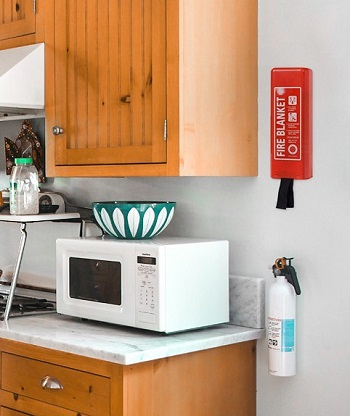
Amenity standards in HMOs
As well as the basic standards which apply to all HMOs, landlords must also ensure they meet certain amenity standards – all dependant on the number of occupants.
The table below gives the minimum requirement per number of occupants;
| Occupants | Kitchen area (m2) | Hob rings | Ovens | Grills | Sinks | Work surface (m) | Bathrooms | Separate WCs | Lounge area (m2) |
|---|---|---|---|---|---|---|---|---|---|
| Less than 5 | 7.0 | 4 | 1 | 1 | 1 | 2.0 | 1 | 0 | 11.5 |
| 5 | 7.0 | 4 | 1 | 1 | 1 | 2.0 | 1 | 1 | 11.5 |
| 6 | 7.0 | 8* | 2* | 2 | 2# | 2.5 | 2 | 0 | 11.5 |
| 7 | 9.5 | 8* | 2* | 2* | 2# | 3.0 | 2 | 1 | 14 |
| 8 | 12.0 | 8 | 2 | 2* | 2 | 3.5 | 2 | 1 | 16.5 |
| 9 | 14.5 | 8 | 2 | 2 | 2 | 4.0 | 2 | 1 | 19.0 |
| 10.0 | 17.0 | 8 | 2 | 2 | 2 | 4.5 | 2 | 1 | 21.5 |
- (*) means that the additional hob rings, grill and oven can be replaced by a convector microwave oven.
- (#) means that the extra sink can be replaced by a dishwasher.
- Separate WC compartments must include a wash hand basin.

Fire precautions in HMOs
In addition to amenity standards, landlords must also have certain precautions in place in the event of a fire. While amenity standards vary based on occupancy level, fire precautions are dependant on how many storeys tall a property is.
Two-storey HMOs (less than 7 contract-holders, classed as low risk)
- Structural protection (30 minutes fire resistance) between the lounge/kitchen and the common escape route (hall, stairs & landings).
- A fire door to the lounge/kitchen including intumescent strips with brush-type smoke seals, 3 x 100mm steel hinges and a self-closing device which may be an overhead, double chain Perko type or self closing hinges.
- A fire blanket in the kitchen fixed to the wall.
- A fire alarm to BS 5839, type LD3, Grade D (plus kitchen and lounge) or better.
- There is no legal requirement for fire extinguishers, but a local authority may recommend either 6 litre AFFF foam or 1.5 kg dry powder extinguishers. If fire extinguishers are provided, they must be serviced annually.
- A thumb-turn type lock to the front door. The contract-holders must be able to escape from the property in the event of a fire without needing a key or other tool to open the front door.
As two-storey properties with 7 or more contract-holders are classed as a ‘normal’ risk, as opposed to a ‘low’ risk, they will need the same precautions as three-storey properties listed below.
Three-storey HMOs (7 or more contract-holders, normal risk)
- Structural protection (30 minutes fire resistance) between each room and the rooms surrounding it and between each room and the common escape route (hall, stairs & landings)
- Fire doors to just about all rooms including intumescent strips (with brush-type smoke seals if the room contains a smoke detector),3 x 100mm steel hinges and a self-closing device which may be an overhead, double chain Perko type or self-closing hinges. Please note that if a room does not contain a smoke detector, brush-type smoke seals must not be fitted.
- A fire blanket in the kitchen fixed to the wall.
- A fire alarm to BS 5839, type LD3, Grade D (plus kitchen and lounge) or better.
- There is no legal requirement for fire extinguishers, but a local authority may recommend either 6 litre AFFF foam or 1.5 kg dry powder extinguishers. If fire extinguishers are provided, they must be serviced annually.
- A thumb-turn type lock to the front door. The contract-holders must be able to escape from the property in the event of a fire without needing a key or other tool to open the front door.
